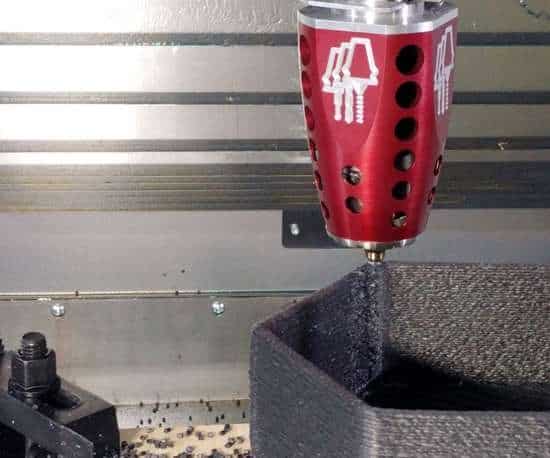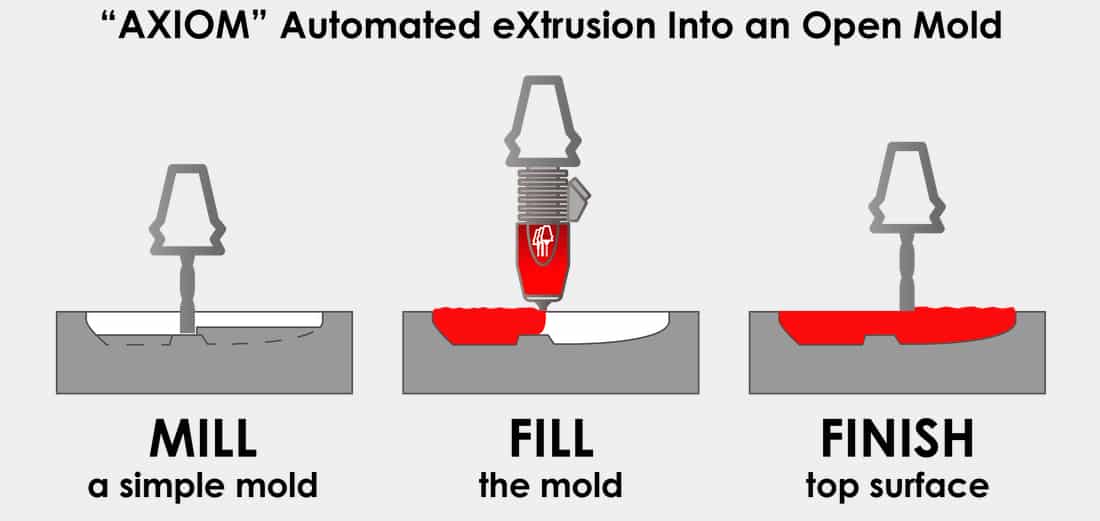The comparison between additive manufacturing and subtractive manufacturing is usually a shoulder-to-shoulder comparison, one against the other. Additive manufacturing systems allow designers to take advantage of complex geometries, which are expensive and difficult to manufacture through subtractive manufacturing. If both systems can easily produce the geometry of the object, especially in mass production, subtractive manufacturing is usually more cost-effective. Materials produced by subtractive manufacturing are generally stronger than additive manufacturing systems, because as 3D printers deposit materials in the form of pancakes, it increases the likelihood of problems caused by arbitrary layers.

However, some hybrid systems combine these two manufacturing systems, and Hybrid Manufacturing Technology (HMT) is one of them. HMT, which specializes in mixed-subtractive additive systems, recently developed a thermoplastic production method called “AXIOM”, which represents automatic extrusion into an open mold.
The AXIOM method combines the advantages of two manufacturing technologies into an isolated manufacturing system. The resulting parts have high material strength and can be printed quickly like injection molding systems, but have certain advantages of additive manufacturing systems.
For example, when it is necessary to use one hundred or more components to make a product, injection molding is usually the most economical way. HMT’s AXIOM approach attempts to strike a balance between the two systems and provide manufacturers with greater flexibility by creating new print heads.
AMBIT XTRUDE PE-1 3D print head
HMT decided to connect its AMBIT XTRUDE PE-1 3D print head to a CNC milling machine to extrude materials that are not normally available to manufacturers for 3D printing material options. This results in a material with a better surface finish and no layer lines normally generated by 3D printing, which means the final result looks more like a finished injection molded part.
HMT uses the AMBIT XTRUDE PE-1 3D print head with a CNC milling machine to produce polymer parts similar to finished injection molded parts at a speed similar to the injection speed.
In less than 24 hours, HMT was able to transform a CNC milling machine into a 3D printer capable of extruding composite materials and polymers. Since then, HMT has integrated the AXIOM method into machines including parallel kinematics (PKM) platforms, robotic arms, and CNC tool tables.
This makes the AMBIT PE-1 extruder a practical choice for those machining shops on the fence where the additive manufacturing system is incorporated into their operations. Such a machining workshop can theoretically produce various parts indoors, such as fixtures and fixtures.
Bottom line
The AXIOM method was created by promoting the integration of AMBIT XTRUDE 3D print heads into CNC milling to help reduce the impact of the COVID-19 pandemic on the global supply chain, which has led to a sharp increase in the demand for personal protective equipment (PPE) from the world Medical institutions everywhere. HMT is just one of many manufacturing companies that produce additive manufacturing and subtractive manufacturing systems to help produce medical products (such as face masks) to exacerbate supply shortages caused by the pandemic.



